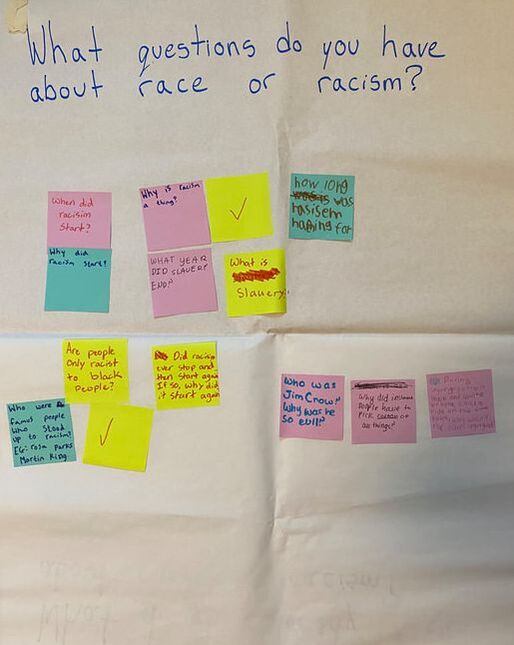|
The Florida State Senate recently passed a bill that would prohibit public schools from teaching subject matter that could make children feel “discomfort” or “guilt” based on their race, sex, or national origin. This bill is part of a national trend. An Education Week analysis found that, in the past year, 37 states have introduced bills or taken other steps to restrict teaching critical race theory or limit how teachers can discuss racism and sexism. Fourteen states have successfully imposed these bans and restrictions. As I have written about previously here, White parents’ fears about their children's discomfort are often greatly overblown. Yes, children may experience some feelings of guilt as they learn about the terrible things that White people have historically done to people of color. However, learning this history can actually be an energizing experience for children, inspiring them to take antiracist action. Earlier this month, I invited the 3rd, 4th, and 5th graders in my Justice Squad group to share their questions about race and racism. Their questions poured out:
These questions reveal how curious children are about the origins and history of racism in this country. The little bit that they have already learned has left them confused and concerned. Consider the questions: “Why did racism start?”; “Why is racism a thing?”; and “Why did Whites think they were better?” To these children, most of whom are White, the idea that one group of people would consider themselves superior to another on the basis of skin color is nonsensical and abhorrent.
Growing up in the liberal-leaning Boston suburbs, these children are probably being taught that all humans are equal. That doesn’t mean that our work is done. Research into how children learn about race shows that even when they are explicitly taught messages of equality, they absorb tacit messages that can lead to the development of racial biases. Living in a society shaped by structural racism, children have to make sense of the inequality that they see around them. In her research on White children’s racial socialization, sociologist Margaret Hagerman has found that children often explain the persistence of inequality with racial stereotypes that blame people of color. So what can parents do? We can make sure our children have opportunities to ask and find answers to their questions. That means bringing books and other media that address BIPOC history into our homes and talking about them with our kids. It also means letting our children’s schools know that we want our children to learn this history, and supporting teachers who tackle these topics. Will it make children uncomfortable to learn about this history? It certainly might. But they want and need to know about it. Florida state Senator Shevrin Jones, the state’s Senate Education Committee vice chair and its only Black member, criticized the Florida bill: “They are talking about not wanting White people to feel uncomfortable? Let’s talk about being uncomfortable. My ancestors were uncomfortable when they were stripped away from their children.” It’s time to stop prioritizing White children’s comfort. They can handle the discomfort of learning the truth. Instead, how about we prioritize the humanity of all our children. That means teaching true history, the history our kids want to learn, so that our children can begin to undo the harms that have been perpetuated throughout that history and work for a more racially just future.
0 Comments
|
Archives
November 2022
Categories |


 RSS Feed
RSS Feed
